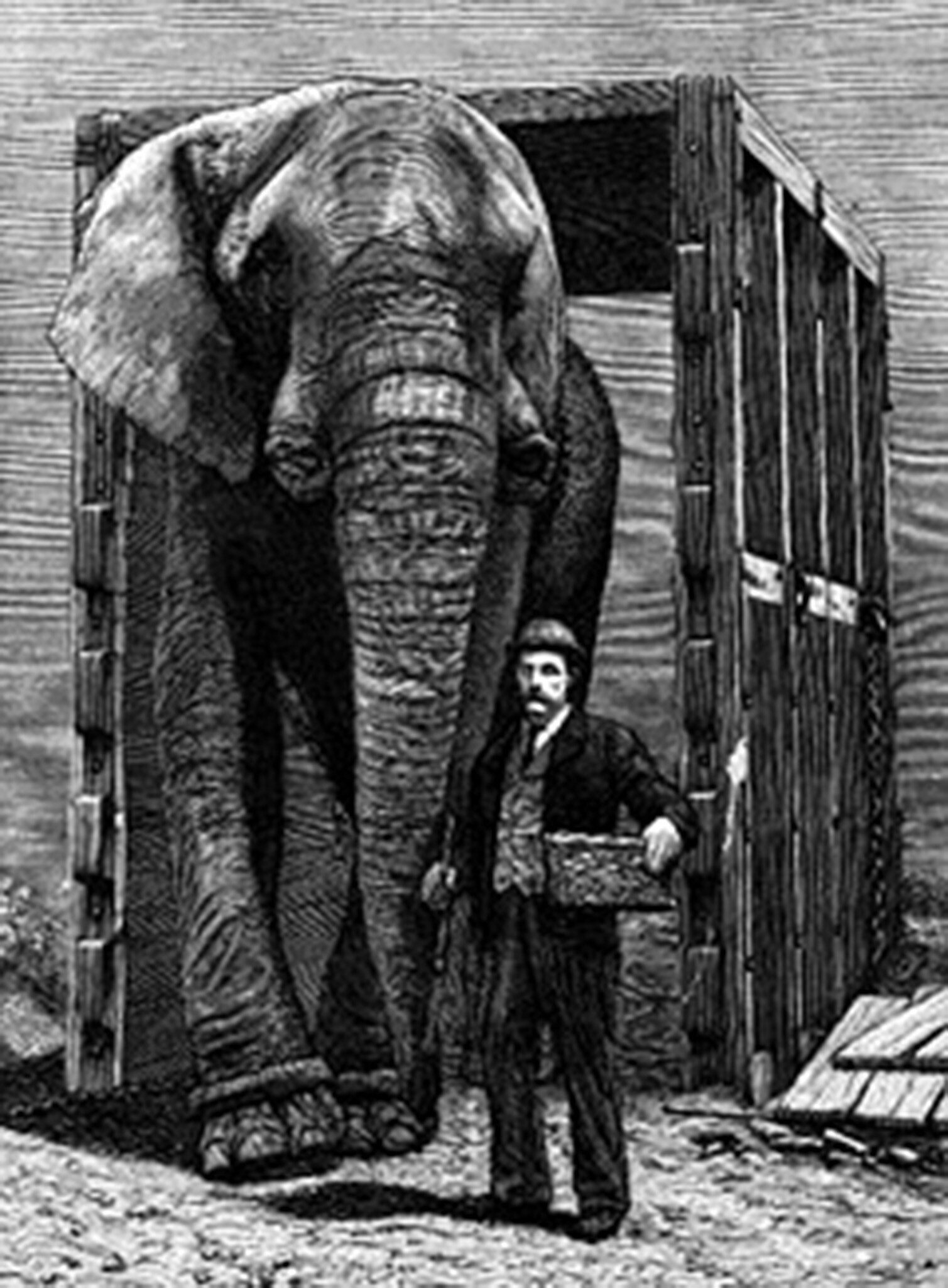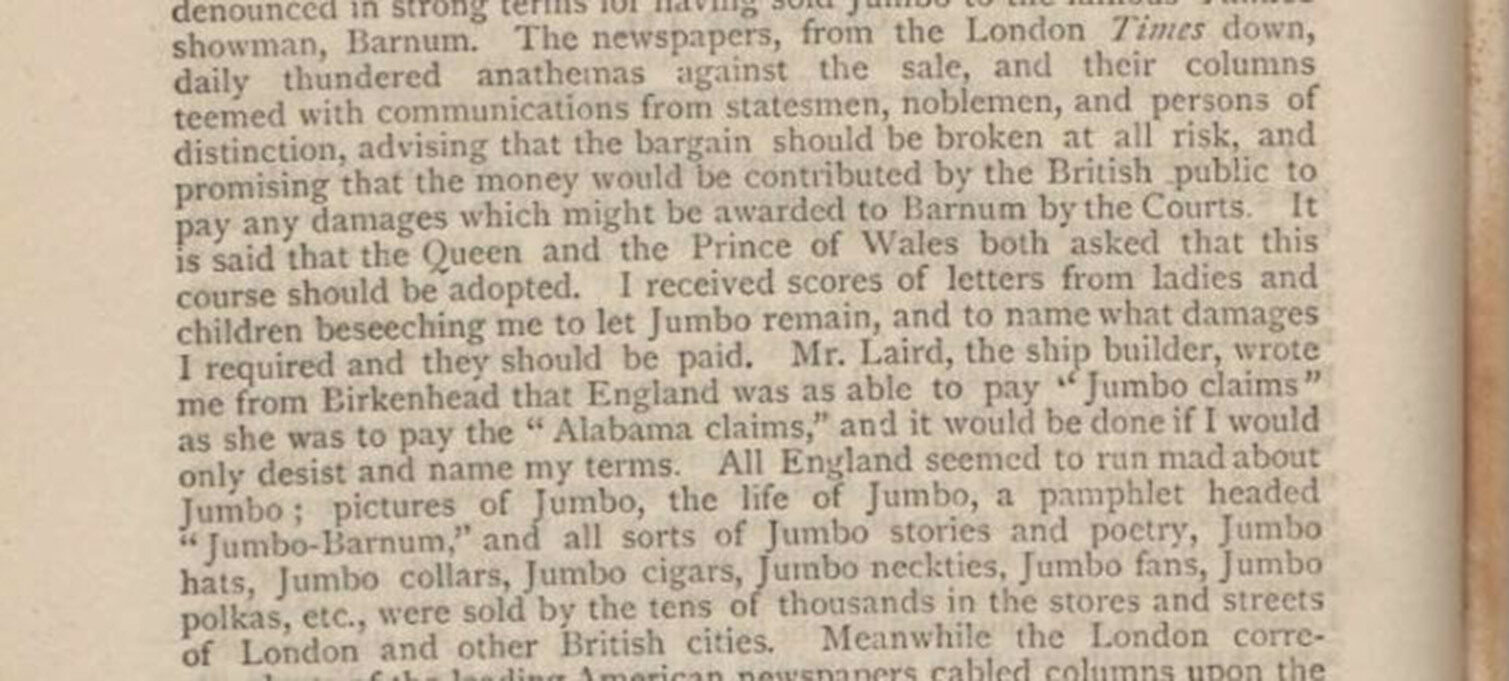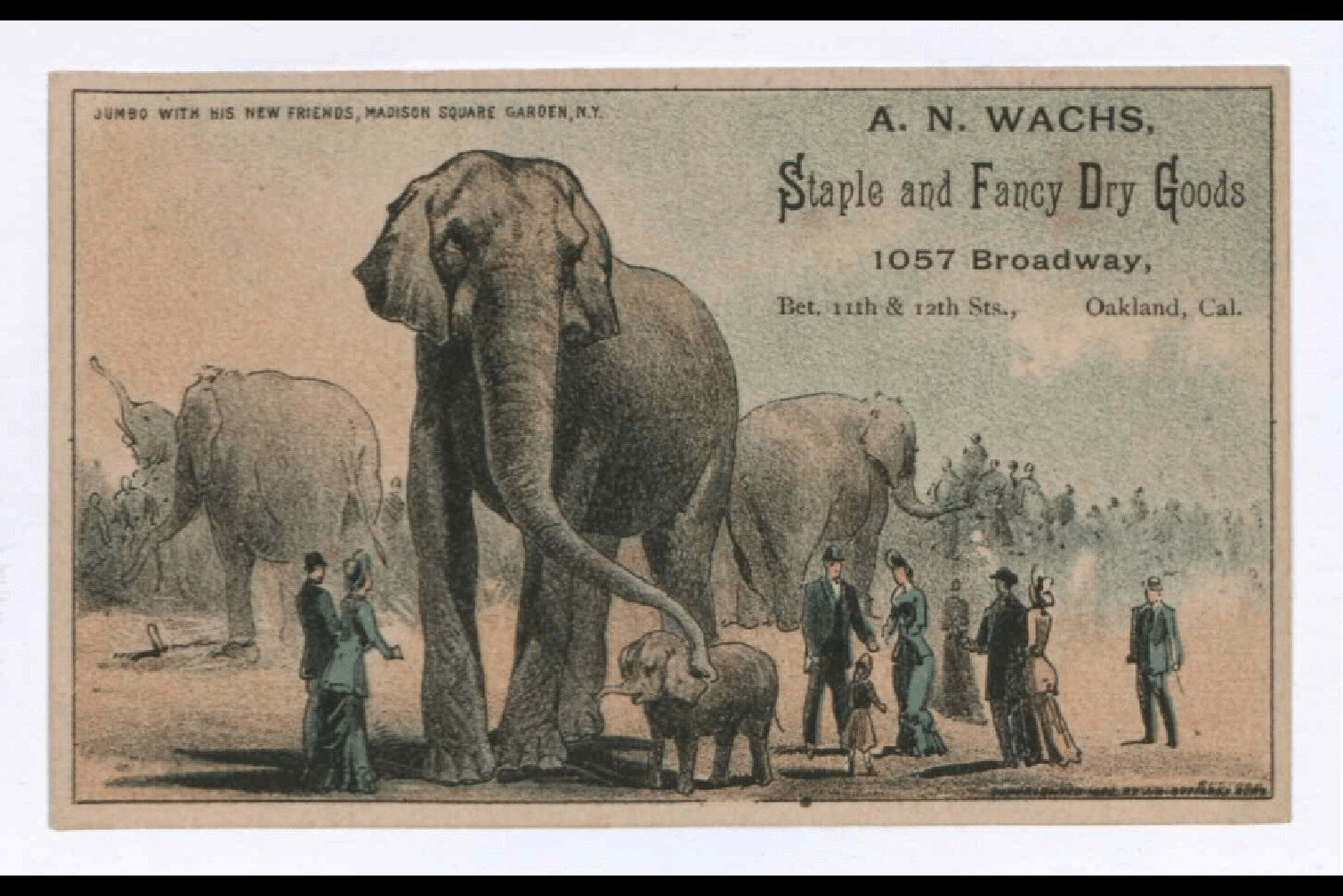The Real Life Dumbo
After a recently watching Disney's 1941 film Dumbo, I was intrigued to find out more about the origins of the film and the circuses that rose to popularity in the nineteenth century, and what better place to look than our fascinating Victorian Popular Culture resource.
Philip Astley, a talented rider, opened the first circus in Britain in 1768. He began by performing trick riding and soon became seen as the father of the modern circus. Circuses began to increase in popularity and by the mid nineteenth century they had become a favoured form of family entertainment. Performed in Big Tops, acrobats, tightrope walkers, animals and jugglers soon became key attractions.
It is believed that the story of Dumbo is loosely based on the real life elephant Jumbo, a male African Bush elephant born in Sudan in 1860. After his mother was killed by poachers he was captured and sold to Lorenzo Casanova, an Italian animal dealer and explorer. Jumbo was then imported to France and kept in Jardin des Plantes, a Paris zoo, before being transferred to London Zoo in 1865. He quickly became a Victorian sensation. A firm favourite of Queen Victoria’s children, Jumbo spent his days giving visitors of the zoo rides on his back.

Jumbo and his trainer Matthew Scott, 1885. Public Domain, accessed via Wiki Commons.
Jumbo started to show signs of aggressive behaviour which is now thought to be caused by neglect and poor health. His trainer Matthew Scott was said to feed Jumbo whisky and beer to keep him calm, which in turn only added to his health problems. Jumbo’s behaviour caused great concern and Abraham Bartlett, the superintendent of London Zoo, decided to sell him to P.T. Barnum of Barnum and Bailey Circus in 1882, sparking great national controversy. Despite a lawsuit against London Zoo and the zoo’s attempt to renege the sale, Jumbo was sent to New York to join the circus. Enormous crowds lined the streets of London to watch Jumbo being transported to a ship to begin his long journey to America.
In Barnum’s autobiography, Life of P.T. Barnum, he writes
‘[all] England seemed to run mad about Jumbo; pictures of Jumbo, the life of Jumbo, a pamphlet headed “Jumbo-Barnum”, and all sorts of Jumbo stories and poetry, Jumbo hats, Jumbo collars, Jumbo cigars, Jumbo neckties, Jumbo fans, Jumbo polkas, etc., were sold by the tens of thousands in the stores and streets of London and other British cities.’

Life of P.T. Barnum. Image © National Fairground Archive, University of Sheffield. Further reproduction prohibited without permission.

Life of P.T. Barnum. Image © National Fairground Archive, University of Sheffield. Further reproduction prohibited without permission.
In New York, Jumbo soon became the star of the show. He was advertised as the world’s largest elephant, thought to be around four metres tall. It is believed that Jumbo brought in the largest crowds in the history of the circus and in just three weeks, Barnum had recouped the £2,000 he had paid for Jumbo.

Jumbo with his new friends, Madison Square Garden, New York. Image © National Fairground Archive, University of Sheffield. Further reproduction prohibited without permission.
Jumbo continued travelling with Barnum & Bailey’s Circus until he was struck by a train and fatally injured in 1885. Despite his death, the ‘Jumbo craze’ did not diminish and continued for many years. His hide was even stuffed and travelled with the circus for a further two years.
Thankfully, Dumbo ends on a much happier note!
For more information about Victorian Popular Culture, including free trial access and price enquiries, please email us at info@amdigital.co.uk.
Recent posts

The blog highlights American Committee on Africa, module II's rich documentation of anti-apartheid activism, focusing on the National Peace Accord, global solidarity, and student-led divestment campaigns. It explores the pivotal role of universities, protests, and public education in pressuring institutions to divest from apartheid, shaping global attitudes toward social justice and reform.

This blog examines how primary sources can be used to trace the impact of young voices on society, particularly during pivotal voting reforms in the UK and the US. Explore materials that reveal insights into youth activism, intergenerational gaps, and societal perceptions, highlighting their interdisciplinary value for studying youth culture, activism, and girlhood across history.
